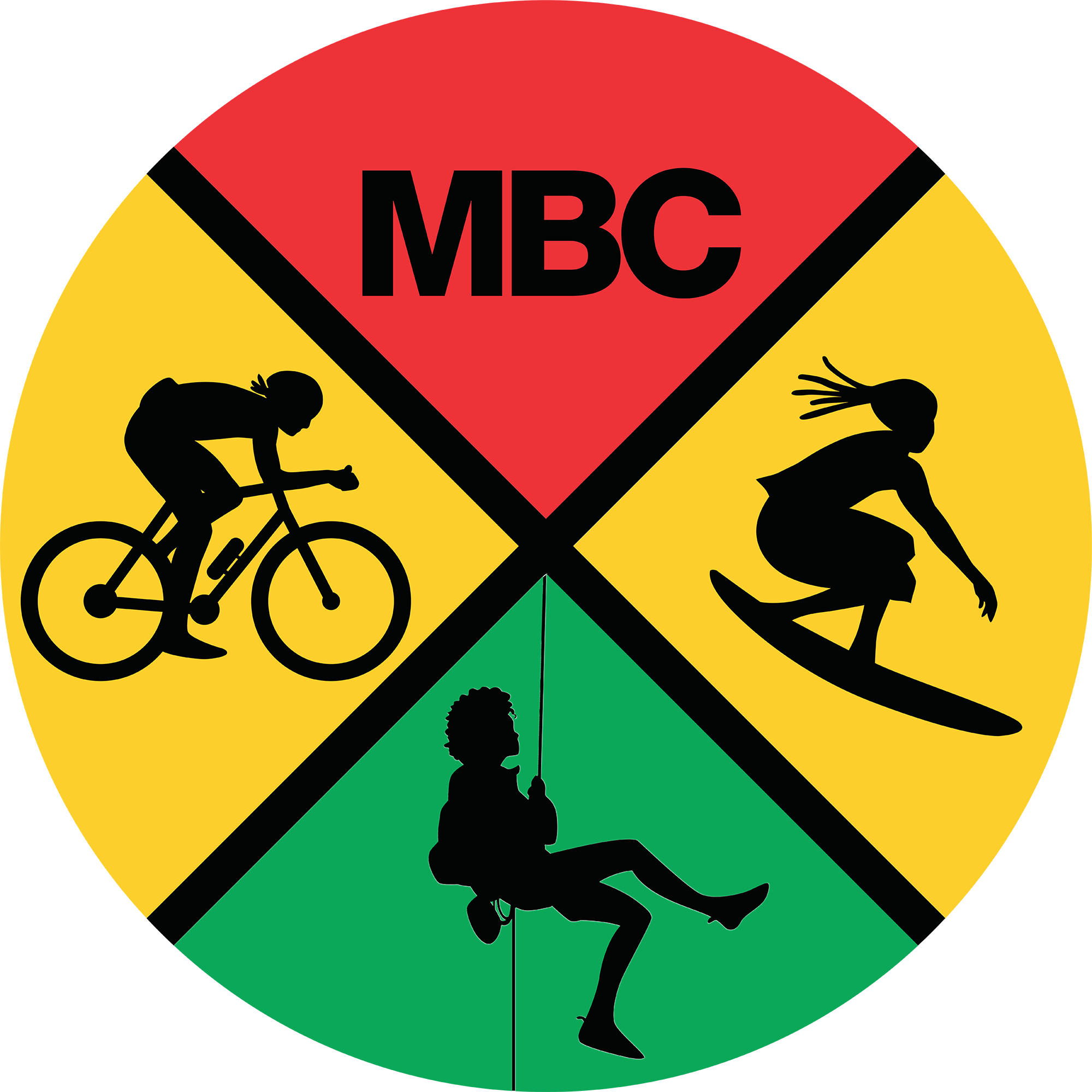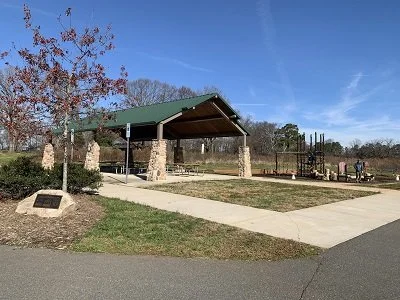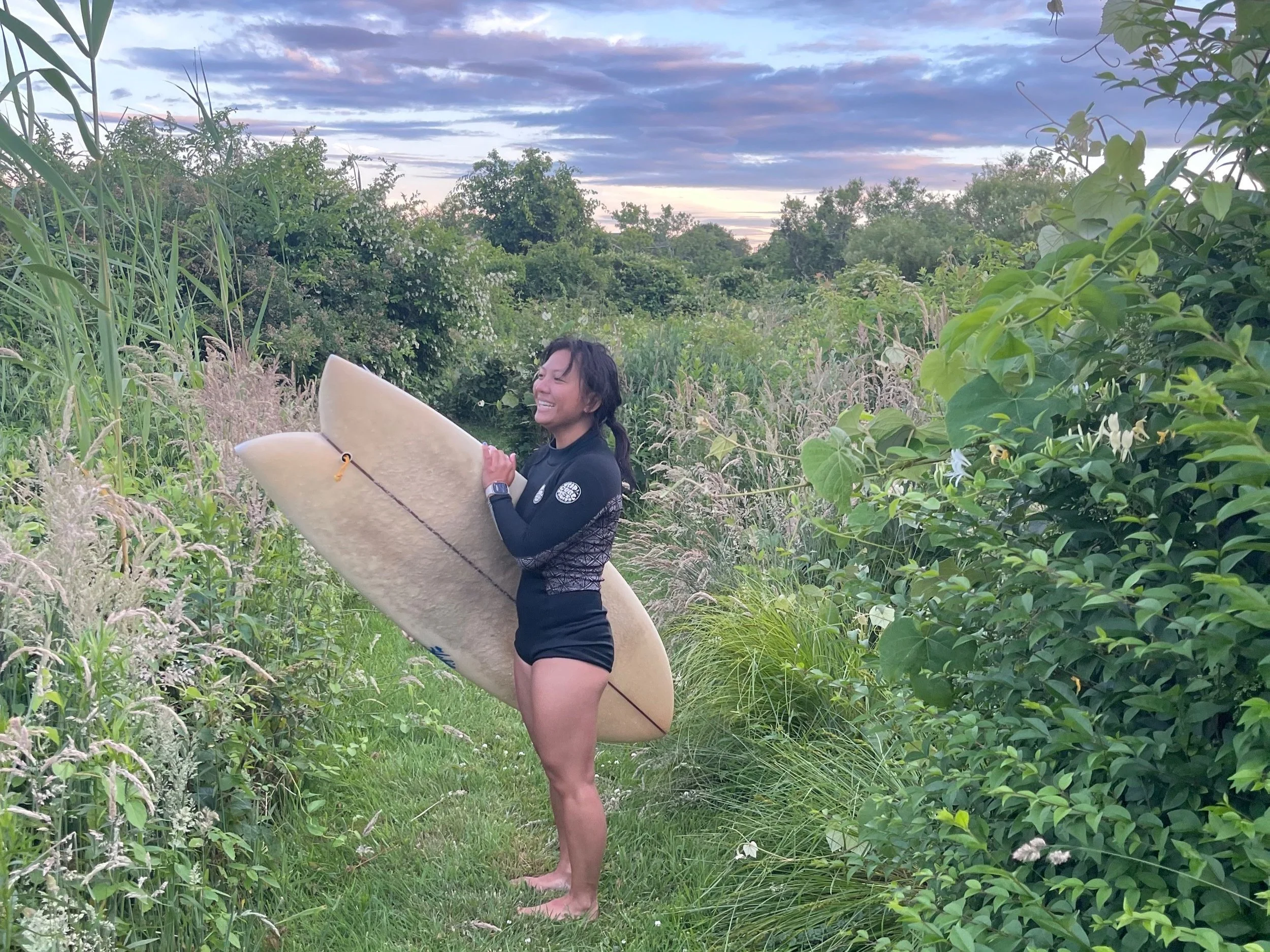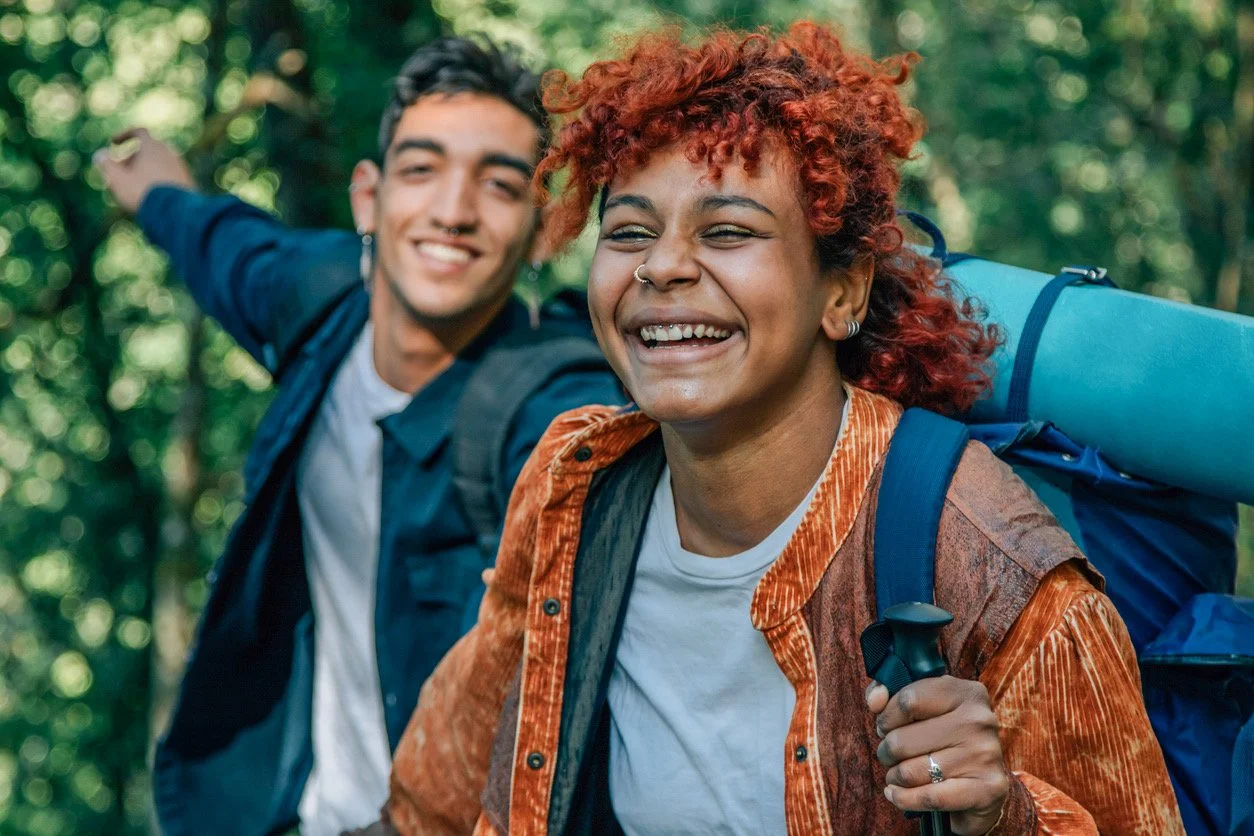5 Easy Steps To Get Outside in Your City Without Visiting a National Park
Imani on the Irish Buffalo Creek Greenway.
Have you ever scrolled past a beautiful mountaintop sunrise knowing you won’t ever experience it in person? Maybe it’s too expensive or far away. Or maybe you don’t know how to get started. Nature is right at our fingertips online but some of us are farther away than ever. We didn’t grow up with access to nature and it feels like we’ll never get there. If you can relate, you are not alone.
Communities of color are about 3x more likely than white communities to live in “nature-deprived” areas, with less or no access to green spaces. And when we do, it’s not the same. Parks in low-income neighborhoods are 4x smaller but serve 4x more people, according to Trust for Public Land. If you are a person of color living in a working class neighborhood, you probably already know this.
As a social worker who grew up in Charlotte, North Carolina, I’ve seen firsthand how not having access to nature hurts families and worsens mental health. Parks are more than spaces where children learn and play, they keep temperatures cooler in summer, and provide third places for the community to gather.
Watching other people enjoy nature while you’re stuck at home can be exhausting, mentally and emotionally. Or it could inspire you to find ways to get outside in your local community. If your outdoor plans routinely struggle to make it out of the group chat, that’s okay. I’m still finding my own comfort with the outdoors. Nature can feel intimidating, but it gets easier when you know what to expect. So let’s explore five of my favorite urban green spaces to help you get outside this summer.
5. Visit Your City’s Public Parks and Greenways
Can I be honest? As a Black woman who doesn’t have children, there are many random parts of town that don’t seem like they’re meant for me, and that often stifles my curiosity to know more. Then there’s the fact that we’re often barred from green spaces due to the appearance that they aren’t open to the public. That’s why I recommend you check out a public park or greenway this summer.
Most cities have public parks with trails, sports fields, a playground and picnic areas. You probably drive or take the bus past a park every day! They’re paid for by your taxes and are usually free for the public to use.
Then there are greenways, or trail systems that connect different neighborhoods and communities. They’re also free to use and great places to run, walk, skate, or bike.
If you want to be in nature but you don’t want to go far, start by visiting a local park or greenway. Go alone or bring a friend or family member. Wear comfortable clothing and shoes, and try a short walk. Don’t forget to bring water.
When I’m trying to meet my daily step goal, I often find success by strolling down a greenway and exploring the connected communities. I like to bring my dog along for my own comfort and to make sure she’s getting the activity she needs.
A greenway is also a convenient way to get outside and meet new people. I visited the Irish Buffalo Creek Greenway (pictured above), and had the pleasure of running into many of my neighbors, from other solo adults to families with small children. Charlotte has a fantastic greenway system, and many of the trails are home to gorgeous creeks and curious wildlife. This is an awesome, low-impact way to get yourself out there!
4. Join a Community Garden Near You
Clarks Creek Community Garden.
A community garden is a public green space where people from a nearby community can grow crops together - anything from flowers, vegetables, herbs, and more. Community garden plots are often free and only require that you maintain your plot and not disturb anyone else’s.
As a social worker, food security is a daily focus of mine on the job. Community gardens often stand in the gap for folks who are food insecure. The Clarks Creek Community Garden (pictured above) offered free herbs and tomatoes to visitors who couldn’t participate but were also in need. The garden also hosts events such as back-to-school backpack drives for youth.
Community gardens are a great way to be active outdoors and get to know your neighbors. While visiting the Clarks Creek Community Garden, I had the honor of meeting Ms. Charlotte Thompson, a 78-year-old retired case manager and the former captain of the garden. As the captain, Ms. Charlotte established the now thriving garden and oversaw the development of a children’s program to provide more opportunities for youth in the garden.
“This is my passion,” Ms. Charlotte exclaimed, beaming with pride at her hard work. “It makes so many people happy.” After 30 years of social work experience, Ms. Charlotte sought out gardening in order to stay involved in the community she loves. She left me with a final message of encouragement: “it’s our community. We have to do better, we have to get more involved.”
3. Explore Nature Centers and Preserves
Picnic shelter at Clarks Creek Nature Preserve.
Here’s something I’m embarrassed to admit - I lived in the same part of Charlotte for years, and I never knew I was within walking distance of the Clarks Creek Nature Preserve! A nature preserve is designed to do exactly what its name implies - preserve the natural ecosystems and wildlife in a given area. It’s usually less developed than a park, but still offers walking trails and a chance to engage with nature in a low-stakes environment. Hiking boots are not required. You might enjoy a casual stroll in a place like this, or you could plan a fun picnic or activities such as birdwatching.
It was fun realizing that this was another green space accessible to me, and so close to home all this time!
2. Check Out a Nature Museum or Botanical Garden
The Asian Garden at UNC Charlotte’s Botanical Gardens.
At this point you may be thinking, “Imani, that’s a little too much nature for me.” If so, a nature museum or botanical garden may be more your speed! When you think of a botanical garden, think of an outdoor plant museum, with displays of flowers and other flora specifically grown and curated for education, conservation, or other purposes. A well-known Charlotte-based botanical garden is the Botanical Gardens at UNC Charlotte. It’s home to an Asian garden, a memorial sensory garden, a greenhouse, and a 7-acre woodland glen. The Asian garden is fascinating to me, home to a large number of diverse plant types that are Asian and non-Asian.
There’s more to do in a botanical garden than you may think. If you’re curious about activities such as plant identification, bird identification, bonsai work, and plant propagation, your nearest garden is a good place to start. They often host educational workshops, summer camps, and events to engage people in outdoor activities. A botanical garden might help you learn a new hobby while also meeting new people!
You can also try a nature museum. A nature museum won’t give you the fresh air of the outdoors, but it can help you learn more, so you know what to expect when you’re ready to get outside, and may be a better option for accessibility needs. Nature museums also offer exhibits that tie into cultural displays for educational purposes. They may highlight the way different cultures use nature in every day life or how people from different regions respond to the environment around them.
1. Hike at a Nearby State or National Park
Crowders Mountain State Park.
Feel like taking a drive? It’s time to explore a state or national park near you! While there are no state parks in Charlotte, there are four nearby. One of the more popular ones is Crowders Mountain, home to a number of hiking trails and activities such as paddling, fishing, and rock climbing. If you want to make the most out of a long drive, turn your visit into a day trip! Research activities and restaurants in that area. Spend time learning the history of the town you’re in, including the Indigenous history as well. It’s always good to research the town you’re visiting before you go.
Whether you’re getting outside alone or with friends, it’s always good to keep safety in mind. On that note, here are five more pieces of advice to keep in mind:
Bring a buddy or let someone know where you are. Particularly if you’re headed out of town or to an unfamiliar part of town near you, it helps to have someone with you, share your iPhone location, or text travel plans to a friend.
Stay aware of your surroundings. It’s okay to play music while hiking a greenway or to scroll on your phone while lounging in a botanical garden. But make sure to stay aware of folks around you, and be mindful of areas with wildlife, like snakes or deer. Keep tabs on where you are, so you don’t get lost!
Don’t forget to hydrate! If you think you’ll be out on a trail for longer than it takes to read this article, please take water! You can also choose to bring snacks to keep your energy up, but always make sure you have water on hand, even on cooler days, to stave off dehydration.
Be respectful of the environment you’re in. Remember, these green spaces are not just home to various wildlife, they are also shared spaces for the community. Hold onto your trash until you get to a trash can, and remember to clean up behind your pets.
Take pictures! I’ve taken so many walks on nearby greenways and posted pictures of where I was. I was often met with awed responses at the beauty of such a common and accessible area. Take pictures and share what you find while navigating these new spaces. You never know who else you’ll encourage to get outside!
Sources:
Borunda, Alejandra. “People of color 3x more likely to live in ‘nature deprived’ U.S. neighborhoods”. National Geographic, July 29, 2020. https://www.nationalgeographic.com/science/article/how-nature-deprived-neighborhoods-impact-health-people-of-color.
The Trust for Public Land. “The Heat is On: With temperatures rising and quality parks too few and far between, communities of color face a dangerous disparity”. 2022. The-Heat-is-on_A-Trust-for-Public-Land_special-report.pdf
Image Sources:
Picnic Shelter at Clarks Creek Nature Preserve - blazeCLT: Clarks Creek Nature Preserve
Asian Garden at UNC Charlotte’s Botanical Gardens - UNC Charlotte Botanical Gardens
Crowders Mountain State Park - Crowders Mountain State Park: Home | NC State Parks





















The three of us hiked side-by-side across 900 miles of desert and Sierra Nevada. We learned how to self arrest on Baden Powell, soaked our sore feet in hot springs, screamed when we saw rattlesnakes, and shared meals, motel rooms, and late-night movies.
Our time together on the Pacific Crest Trail felt like a dream — until it suddenly ended.